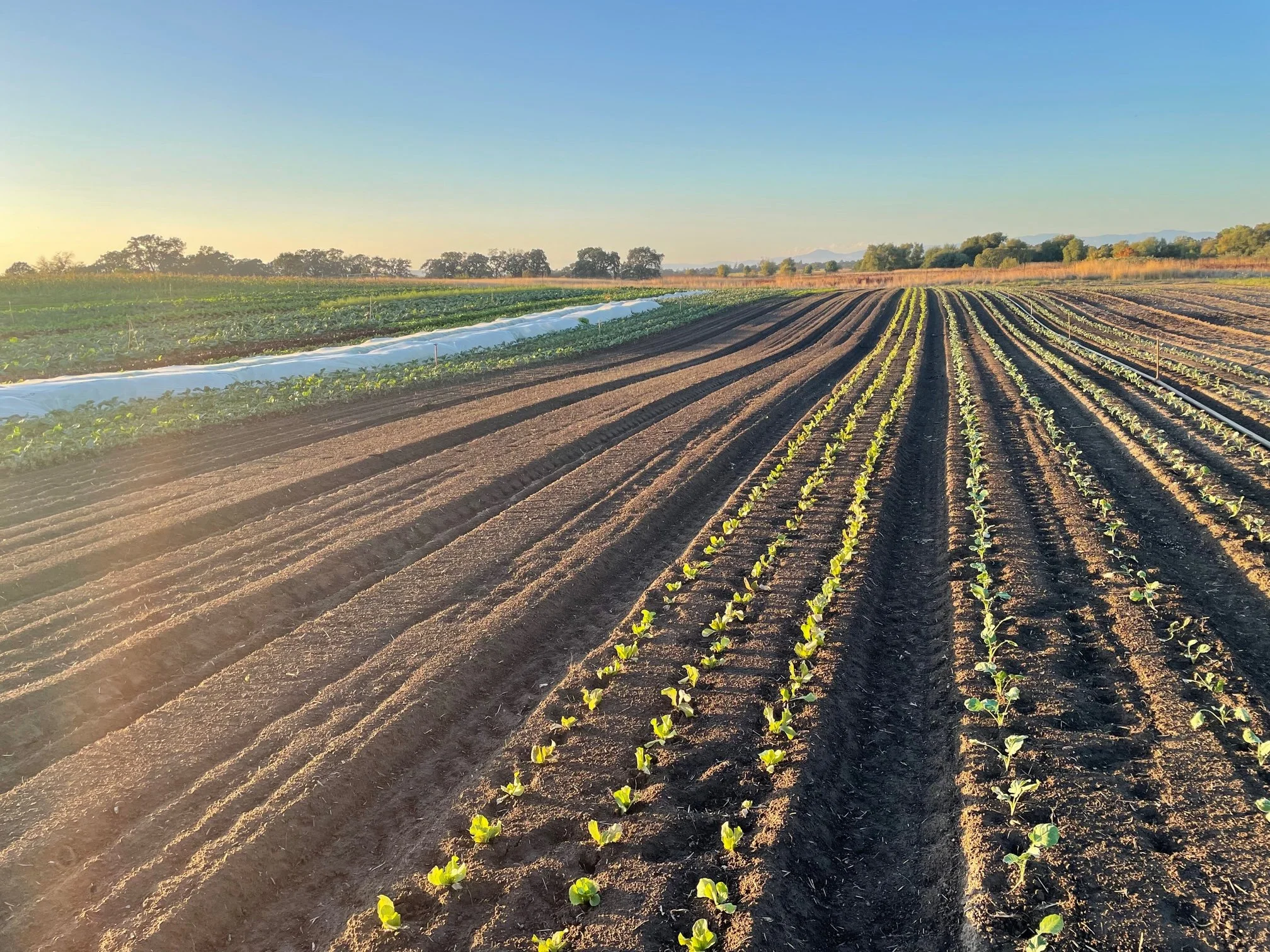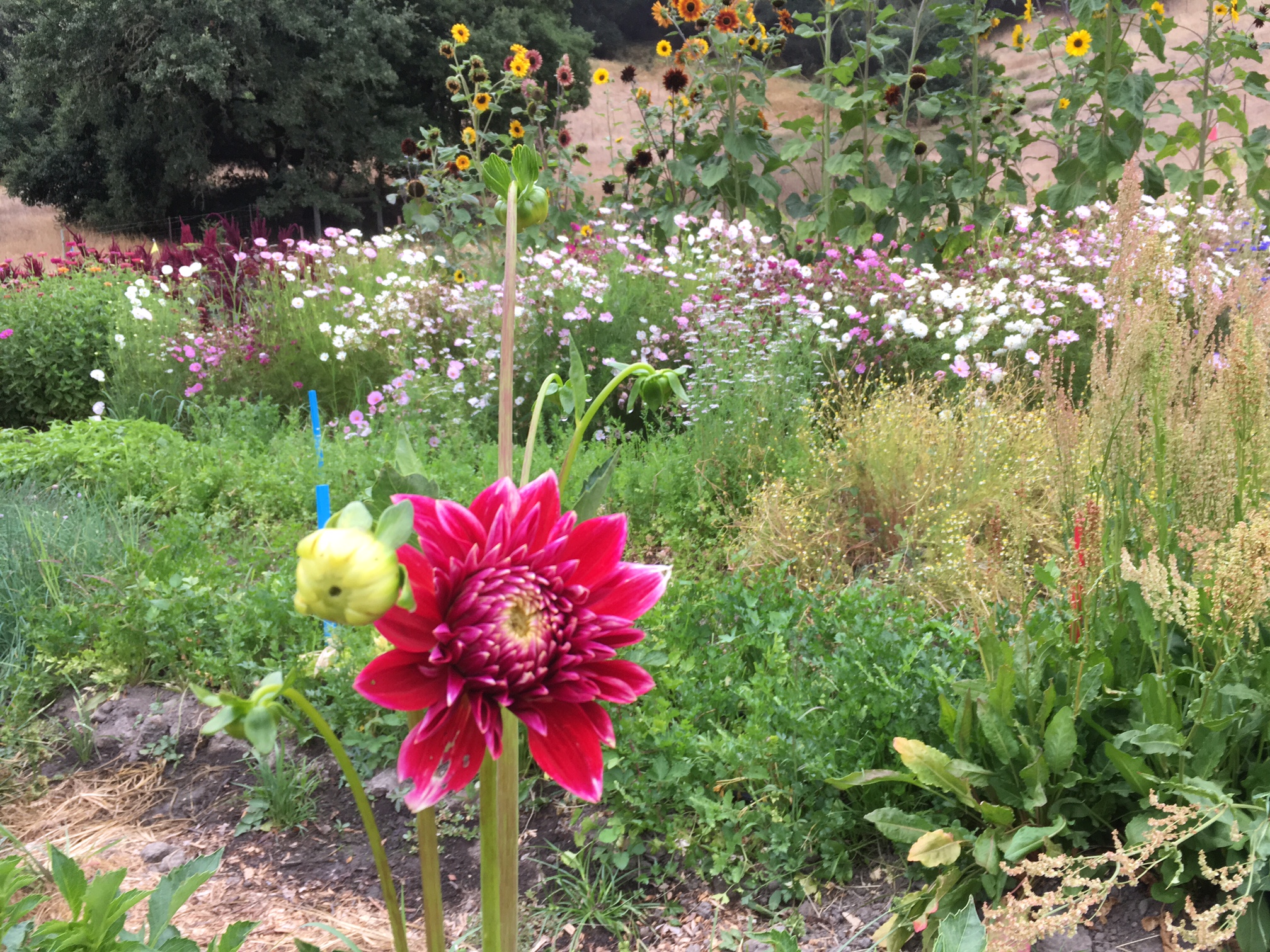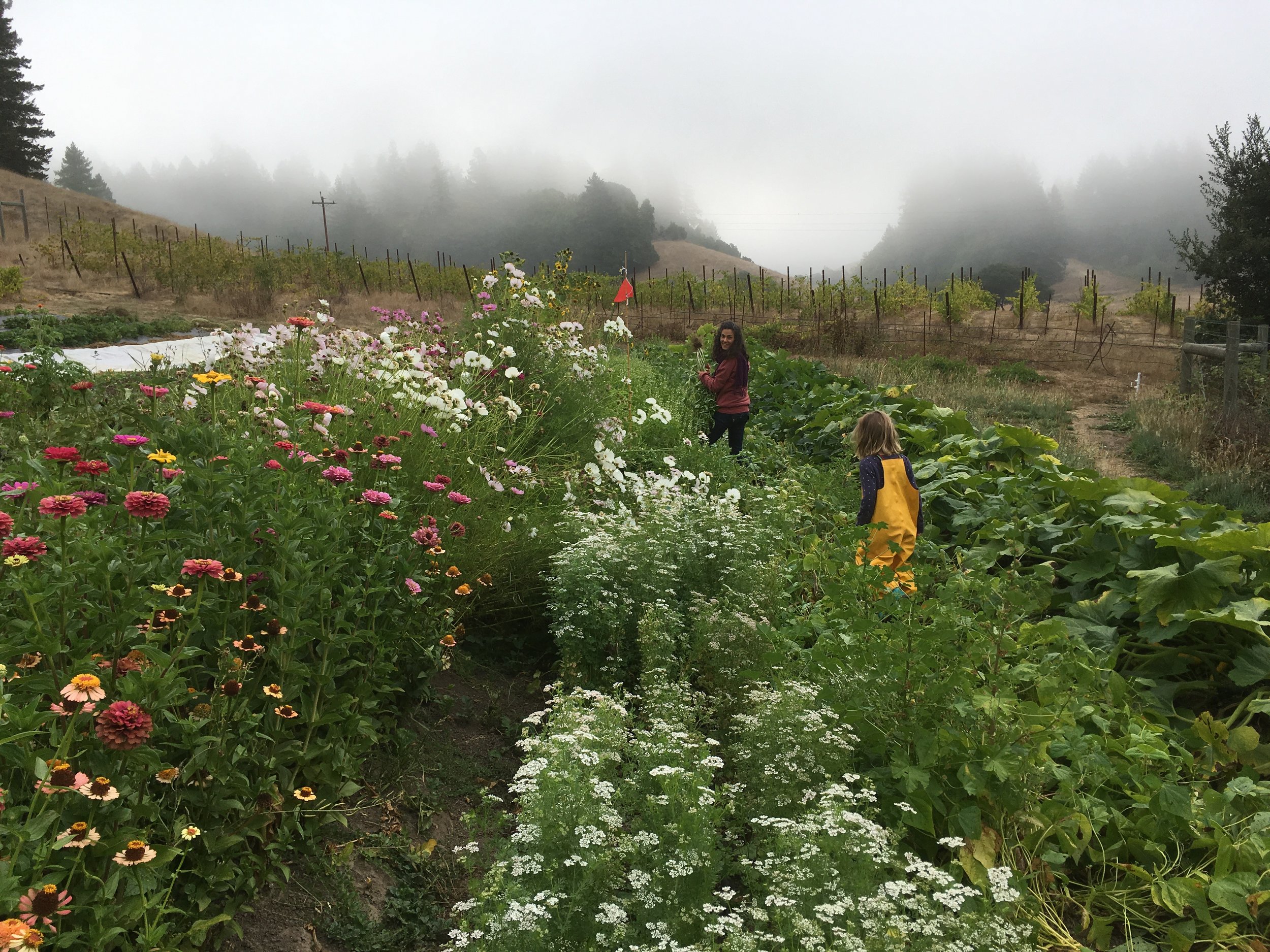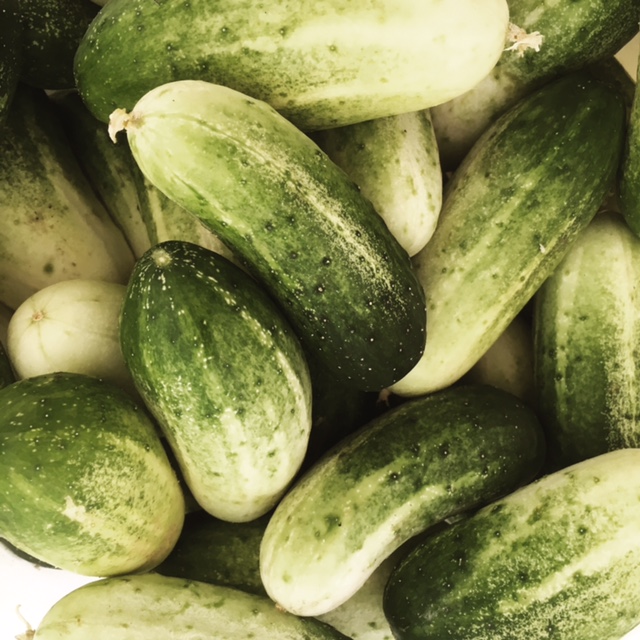THIS WEEK'S HARVEST: Rosaine Red & Green Little Gem Lettuces, Arugula, Mustard Salad Greens Mix, Rainbow Chard, Olympic Red Kale, Dino Kale, Mixed Summer Squash (Italian Zucchini, Crookneck and Patty Pan), Striped Armenian Cucumbers, Chioggia/Red Ace/and Golden Beets, Heirloom and New Girl Tomatoes, Hakurei Turnips, Cauliflower, Murdoch Cabbage, Bok Choi, Scallions, Romance/Purple Haze/Yellow Star Carrots, Nadia Italian Eggplant
U-PICK in the GARDEN: Herbs: Basil, Cilantro, Savory, Onion Chives, Parsley, Sage, Oregano, Dill, Thymes, Mints, Sorrel, Chamomile, Lemon Verbena, Lemon Balm, Lemon Gras, Anise Hyssop Cut flowers: *Dahlias, Celosia, Craspedia, Cosmos, Nasturtium, Bachelor's Buttons, Zinnias, Calendula, Snapdragons, Red Spike Amaranth, Sunflowers, Love-in-a-Mist Frying peppers: Shishitos, Black Hungarian, Padrones, Jalapeños
PRESERVES: Pickling Cucumbers
Husk Cherries aka Ground Cherries aka Cape Gooseberries: These are a delightful sweet little nightshade berries wrapped inside a cool little "wrapper". Kids love them. Just peel the papery wrapper off and eat! Husk Cherries are ripe when the wrapper is golden. (Green = unripe). Look low down under the canopy of leaves for the ripe ones.
U-PICK on the FARM:
Cherry tomatoes: Sungolds, Black Cherry, and Super Sweet 100's in three Rows marked with the blue flags in the main fields.
Wild Blackberries: We can't take any credit for growing them but they sure make a delicious u-pick delight. There are some pretty epic wild blackberry patches on the farm this year. Two being along the fence on the far side of our main fields. They will be marked with pink flags. If you need help locating them, or other patches, just ask. Cobblers await.
FARMERS LOG:
What the heck is this Community Supported Agriculture anyway? Where did it come from? I have a lot of time to think in the fields. This week got me thinking about the history and origins of the CSA model, and I wanted to relay some of that history to you, as I understand it, in the hopes that it gives you a little context for the special errand you're making next time you're traveling down Green Valley Rd.
After World War II, agriculture in Japan, Europe and the U.S. began to change drastically. The mechanization and industrialization of the war effort turned inward into industry and food production. Farms got bigger and more mechanized, family farms got swallowed up, importing exporting and shipping expanded, supermarkets were spawned, even rural communities began to lose the neighborly connection to their food and food producing lands.
As a reaction to this, people in Japan and Europe formed groups that rallied around a single farm or producer in order to sidestep the conventional market. (Legend has it that one of the first formal such arrangements was a group of Japanese women organizing with a local dairy farmer to get fresh milk... hey, Bramble Tail!).
In Europe, these arrangements interwove with and were influenced by the work of Rudolph Steiner (Austrian philosopher who also inspired Waldorf Education and Biodynamic Agriculture). Steiner posited that maybe... just maybe... how we grow our food and tend the earth is such an important undertaking that we should not subject farms and their produce to the cut-throat transactional market but rather care for them and tend to them as communities so that they sustain us. Lots of people agreed.
Biodynamic CSA's thrived in Europe and jumped the Atlantic in the 1980's. Some of the earliest CSA communities followed Steiner's economic prescriptions and left the farmers to farm while other members took care of the bookkeeping, did outreach, helped with strategic planning, etc. I worked on such a farm in Patagonia, Argentina and remember tending a meeting of all the members led by the farmer. He asked for a slight raise in his salary the following season so that he could visit his new niece in Oregon the following winter. They agreed.
CSA's practicing this Old School type of arrangement are rare, for better or worse, and most CSA's nowadays are owned and operated exclusively by the farmers. But the CSA DNA remains,
To bring it home: Your share payments helped pay for the seeds you are eating the fruits and roots of now. They also helped pay for Kayta's and my rent, our lights, the computer I'm typing this on. Your hands harvested a good bit of the food in your body and may plant the garlic you eat next season. Your feedback will help determine what plants go in the ground next year.
There is something magical about food and land and people coming together around one place. It. Just. Makes. Sense.
Thanks for being an integral part of this budding farm community. We're happy we're a part of it.
See you in the fields.
David






